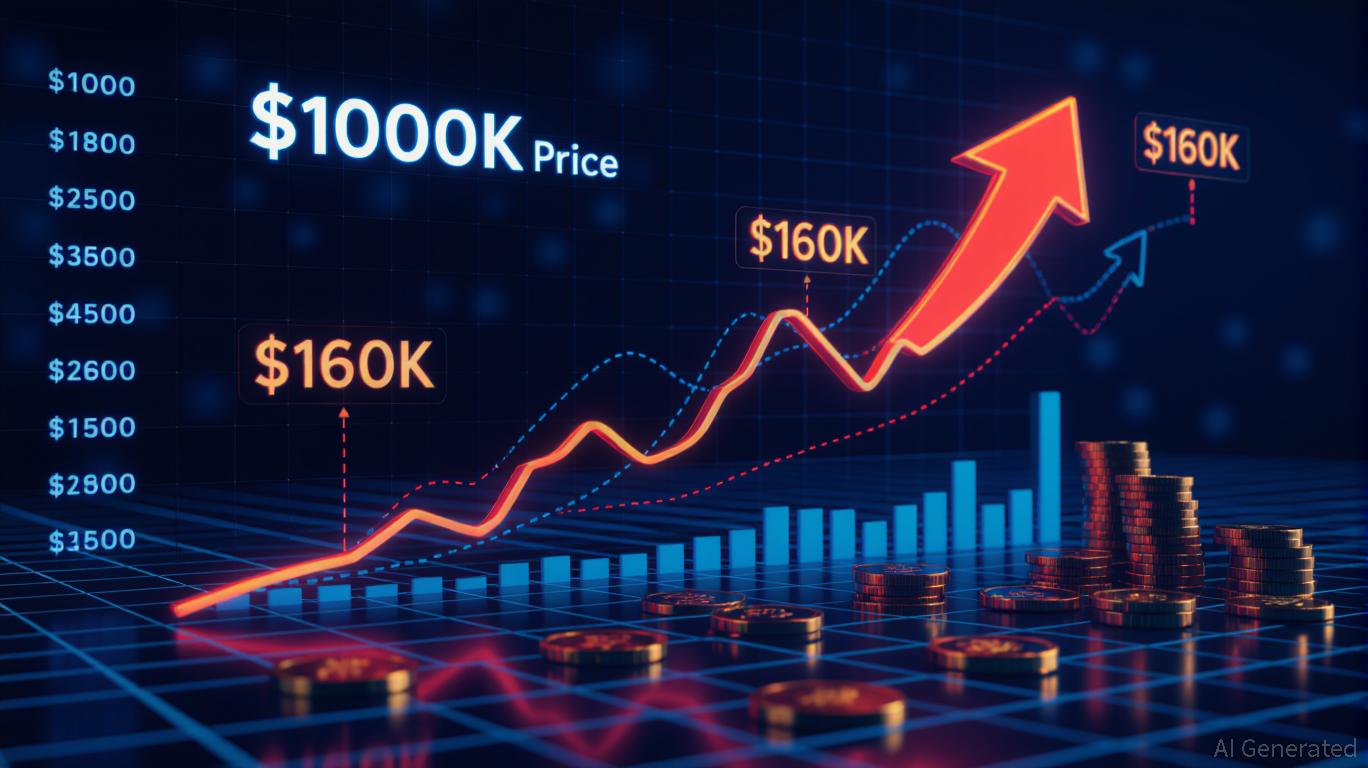Bitcoin's $160K Rally: Where Market Sentiment, On-Chain Metrics, and Macro Tailwinds Converge
Bitcoin's price has surged to $119,117.6 as of July 14, 2025, marking a 101% year-over-year gain and setting the stage for a potential $160K breakout. This momentum isn't accidental—it's the product of a rare alignment of market sentiment, on-chain fundamentals, and macroeconomic tailwinds. Let's dissect how these forces are converging to fuel Bitcoin's next leg higher.
1. Market Sentiment: Greed, ETF Inflows, and Corporate Accumulation
Bitcoin's rise isn't just technical—it's being driven by a shift in psychology. The Fear & Greed Index hit 74 (Greed) in early July, signaling short-term optimism. Analysts like Rachael Lucas of BTC Markets see the $125K–$130K zone as the next critical resistance, with dips below $112K offering “buy the dip” opportunities.
But sentiment isn't just retail-driven. Institutional capital is flooding in:
-
- 53 crypto treasury companies (including MicroStrategy) are buying Bitcoin as a “strategic reserve asset.” alone holds ~597,325 BTC as of July 2025.

2. On-Chain Metrics: Miner Confidence, Holder Distribution, and Whale Activity
The blockchain's data tells a story of structural strength:
- Hash Rate: At 891 million terahashes per second (TH/s), Bitcoin's network security is near an all-time high, signaling miner confidence post-halving.
- Long-Term Holder (LTH) Dominance: 30% of Bitcoin addresses have held their coins for over five years, with cost bases mostly below $50,000. LTHs are unlikely to sell into weakness.
Even more telling is whale activity:
- A dormant whale moved 80,000 BTC ($8.3 billion) on July 14, 2025, sending a signal of confidence. While some speculate about phishing risks, the transaction's use of both legacy and modern addresses suggests sophistication.
Meanwhile, transaction volumes reflect institutional dominance:
- July 10's $95.9 billion trading volume (a 2025 high) and July 14's $181.7 billion surge highlight large-scale institutional buying.
3. Macroeconomic Tailwinds: Inflation, Fed Policy, and Geopolitical Uncertainty
Bitcoin's ascent aligns with macro conditions that favor store-of-value assets:
- Inflation: U.S. inflation remains sticky, with the Fed's potential rate cuts (21.2% chance in July 2025) reducing the opportunity cost of holding Bitcoin.
- Geopolitical Risks: The Israel-Iran conflict and U.S.-China tariff tensions have investors seeking alternatives to traditional safe havens. Bitcoin's correlation with equities—not gold—suggests it's now seen as an inflation hedge for the digital age.
The Path to $160K—and Beyond
Technical analysts see $125K–$130K as the next hurdle, with a breakout possibly pushing Bitcoin toward $140K by August. Longer-term, bullish scenarios envision Bitcoin hitting $1.3 million–$8.6 million by 2050, driven by institutional adoption and ETF liquidity.
But risks linger:
- Overbought Conditions: Bitcoin's RSI is in overbought territory, risking a correction.
- Regulatory Uncertainty: U.S. crypto legislation debates could spook markets.
Historical backtests from 2022 to present show that Bitcoin's overbought RSI periods typically led to positive market reactions, with the maximum return reaching 0.09% in recent instances. This suggests that dips during overbought conditions may present buying opportunities rather than significant corrections.
Investment Thesis: Buy the Dips, Hedge with ETFs
- For the Bullish: Accumulate Bitcoin on dips below $112K. Use dollar-cost averaging to ride the macro cycle.
- For the Cautious: Consider Bitcoin ETFs (e.g., IBIT) to mitigate volatility.
- Avoid: Over-leverage. Bitcoin's swings (e.g., a 14% jump from June 20 to July 14) require risk management.
The convergence of sentiment, on-chain health, and macro tailwinds suggests Bitcoin isn't just a speculative asset—it's becoming a mainstream reserve asset. The $160K milestone isn't a stretch; it's a logical next step in Bitcoin's evolution.
Disclosure: This analysis is for informational purposes only and not financial advice. Cryptocurrency investments carry high risk.
Sign up for free to continue reading
By continuing, I agree to the
Market Data Terms of Service and Privacy Statement

Comments
No comments yet